parasect
Attributes
- Species: Parasect
- Base Experience: 142
- Height: 10
- Weight: 295
- Is Default: True
- Order: 81
- Base Happiness: 70
- Capture Rate: 75
- Color: Red
- Egg Groups: Bug , Plant
- Gender Rate: 4
- Has No Gender Differences
- Hatch Counter: 20
- Habitat: Forest
- Is Baby: False
- Is Legendary: False
- Is Mythical: False
- Shape: Armor
Stats
-
HP
-
Attack
-
Defense
-
Special Attack
-
Special Defense
-
Speed
Abilities
- Slot 1: Effect-Spore
- Slot 2: Dry-Skin
- Slot 3: Damp
Held items
- Tiny-Mushroom
- Big-Mushroom
- Balm-Mushroom
Summary
Parasect is a Bug/Grass-type Pokémon introduced in Generation I.
Type: Bug / Grass
Abilities:
- Effect Spore: May inflict sleep, poison, or paralysis on contact.
- Dry Skin (Hidden Ability): Restores HP in rain and reduces HP in harsh sunlight; takes extra damage from Fire-type moves.
Physical Characteristics:
- Parasect resembles a large, orange mushroom crab.
- It has a large red-orange mushroom on its back, known as a tochukaso, with yellow spots.
- Its body is primarily orange with six segmented legs and two small pincers.
- Its blank, white eyes suggest a zombified state controlled by the mushroom.
Behavior and Habitat:
- Typically found in damp forest environments, where they thrive on decaying organic matter.
- Parasect is known for its parasitic relationship with its mushroom, which controls its actions.
- It prefers dark, humid places where fungi can grow abundantly.
- Often seen in groups, as the fungi in their bodies communicate with each other.
In Battle:
- Known for its strategic use of status-inducing moves like Spore and Stun Spore.
- Parasect's signature move, Spore, is a highly accurate sleep-inducing move.
- It has high Attack and decent HP but suffers from low Speed and multiple common weaknesses.
- It is effective against Water, Psychic, and Rock types but is vulnerable to Fire, Flying, Bug, and Poison types.
Evolution:
- Evolves from Paras starting at level 24.
- The evolution is marked by the growth and dominance of the mushroom over the host body.
Interesting Facts:
- Parasect's mushroom is based on the real-life cordyceps fungus, which infects and controls its insect host.
- Often used in traditional remedies within the Pokémon world due to its medicinal properties.
- Despite being controlled by the mushroom, its insect body continues to function as it provides nutrients for the fungi.
- The concept of Parasect highlights themes of parasitism and symbiosis in nature.
Pokémon Sprites
Evolution Chain
Moves
Level Up
- Level 1: Scratch
- Level 1: Absorb
- Level 1: Leech Seed
- Level 1: Poison Powder
- Level 1: Stun Spore
- Level 1: Sleep Powder
- Level 1: Screech
- Level 1: Leech Life
- Level 1: Cross Poison
- Level 15: Fury Swipes
- Level 30: Spore
- Level 39: Slash
- Level 48: Growth
- Level 55: Giga Drain
- Level 55: X Scissor
- Level 59: Aromatherapy
- Level 59: Rage Powder
TM/HM
- Swords Dance
- Cut
- Headbutt
- Body Slam
- Take Down
- Double Edge
- Hyper Beam
- Mega Drain
- Solar Beam
- Dig
- Toxic
- Rage
- Mimic
- Double Team
- Light Screen
- Reflect
- Bide
- Skull Bash
- Flash
- Rest
- Substitute
- Thief
- Snore
- Curse
- Protect
- Sludge Bomb
- Endure
- False Swipe
- Swagger
- Fury Cutter
- Attract
- Sleep Talk
- Return
- Frustration
- Sweet Scent
- Hidden Power
- Sunny Day
- Rock Smash
- Facade
- Nature Power
- Brick Break
- Secret Power
- Bullet Seed
- Aerial Ace
- Natural Gift
- Energy Ball
- Giga Impact
- Captivate
- Grass Knot
- Hone Claws
- Venoshock
- Round
- Struggle Bug
- Confide
Breeding
Other
Flavor Text Entries
- Red: A host-parasite pair in which the parasite mushroom has taken over the host bug. Prefers damp places.
- Blue: A host-parasite pair in which the parasite mushroom has taken over the host bug. Prefers damp places.
- Yellow: The bug host is drained of energy by the mushrooms on its back. They appear to do all the thinking.
- Gold: It stays mostly in dark, damp places, the preference not of the bug, but of the big mush rooms on its back.
- Silver: The larger the mushroom on its back grows, the stronger the mush room spores it scatters.
- Crystal: When nothing's left to extract from the bug, the mushrooms on its back leave spores on the bug's egg.
- Ruby: PARASECT is known to infest large trees en masse and drain nutrients from the lower trunk and roots. When an infested tree dies, they move onto another tree all at once.
- Sapphire: PARASECT is known to infest large trees en masse and drain nutrients from the lower trunk and roots. When an infested tree dies, they move onto another tree all at once.
- Emerald: PARASECT are known to infest the roots of large trees en masse and drain nutrients. When an infested tree dies, they move onto another tree all at once.
- Firered: It scatters toxic spores from the mushroom cap. In China, the spores are used as herbal medicine.
- Leafgreen: A host-parasite pair in which the parasite mushroom has taken over the host bug. Prefers damp places.
- Diamond: A mushroom grown larger than the host’s body controls PARASECT. It scatters poisonous spores.
- Pearl: It is controlled by a mushroom grown larger than the bug body. It is said to prefer damp places.
- Platinum: A mushroom grown larger than the host’s body controls PARASECT. It scatters poisonous spores.
- Heartgold: It stays mostly in dark, damp places, the preference not of the bug, but of the big mushroom on its back.
- Soulsilver: The larger the mushroom on its back grows, the stronger the mushroom spores it scatters.
- Black: A mushroom grown larger than the host’s body controls Parasect. It scatters poisonous spores.
- White: A mushroom grown larger than the host’s body controls Parasect. It scatters poisonous spores.
- Black-2: A mushroom grown larger than the host’s body controls Parasect. It scatters poisonous spores.
- White-2: A mushroom grown larger than the host’s body controls Parasect. It scatters poisonous spores.
- X: A mushroom grown larger than the host’s body controls Parasect. It scatters poisonous spores.
- Y: The larger the mushroom on its back grows, the stronger the mushroom spores it scatters.
- Omega-Ruby: Parasect is known to infest large trees en masse and drain nutrients from the lower trunk and roots. When an infested tree dies, they move onto another tree all at once.
- Alpha-Sapphire: Parasect is known to infest large trees en masse and drain nutrients from the lower trunk and roots. When an infested tree dies, they move onto another tree all at once.
- Sun: The large mushroom on its back controls it. It often fights over territory with Shiinotic.
- Moon: It scatters toxic spores from its mushroom cap. Once harvested, these spores can be steeped and boiled down to prepare herbal medicines.
- Ultra-Sun: The bug is mostly dead, with the mushroom on its back having become the main body. If the mushroom comes off, the bug stops moving.
- Ultra-Moon: Its poisonous spores are also used in traditional medicine. Apparently, spores produced in Alola are not of very good quality.
- Lets-Go-Pikachu: The bug host is drained of energy by the mushroom on its back. The mushroom appears to do all the thinking.
- Lets-Go-Eevee: The bug host is drained of energy by the mushroom on its back. The mushroom appears to do all the thinking.
- Legends-Arceus: Mushroom-lacking specimens of this Pokémon lie unmoving in the forest, lending credence to the hypothesis that the large mushroom is in control of Parasect's actions.
Cards
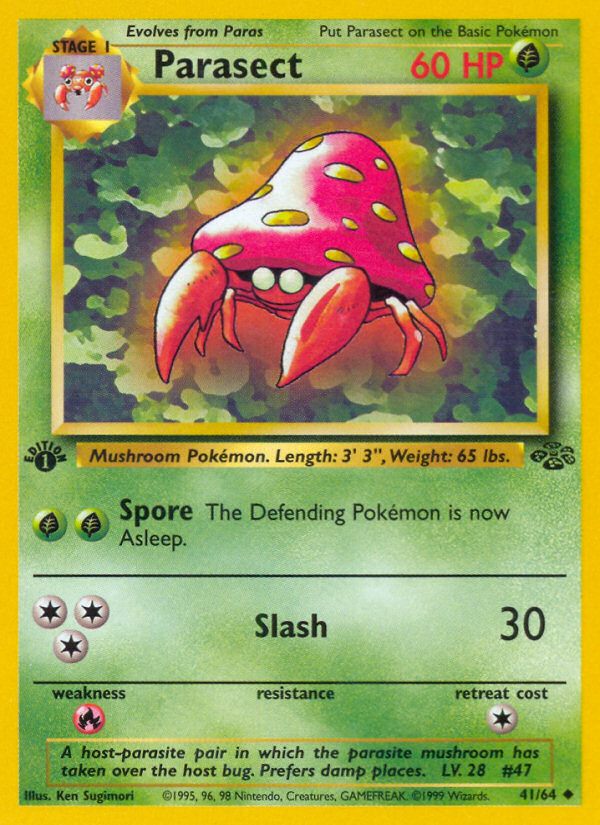
Created by Ken Sugimori for the Unknown Set set.
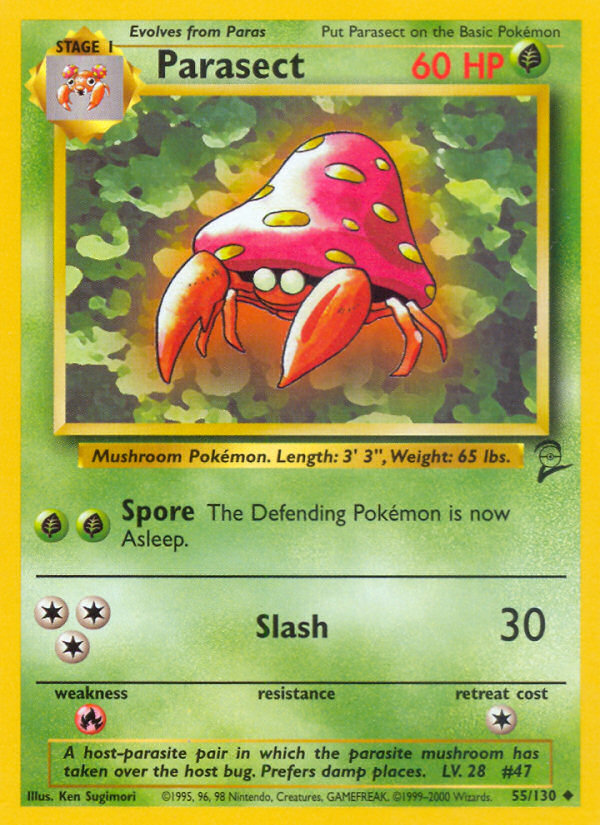
Created by Ken Sugimori for the Unknown Set set.
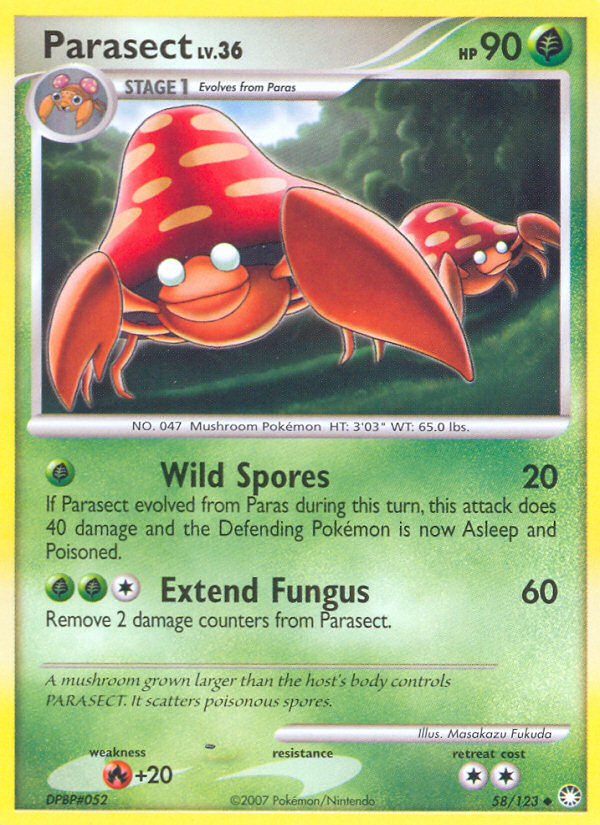
Created by Masakazu Fukuda for the Unknown Set set.
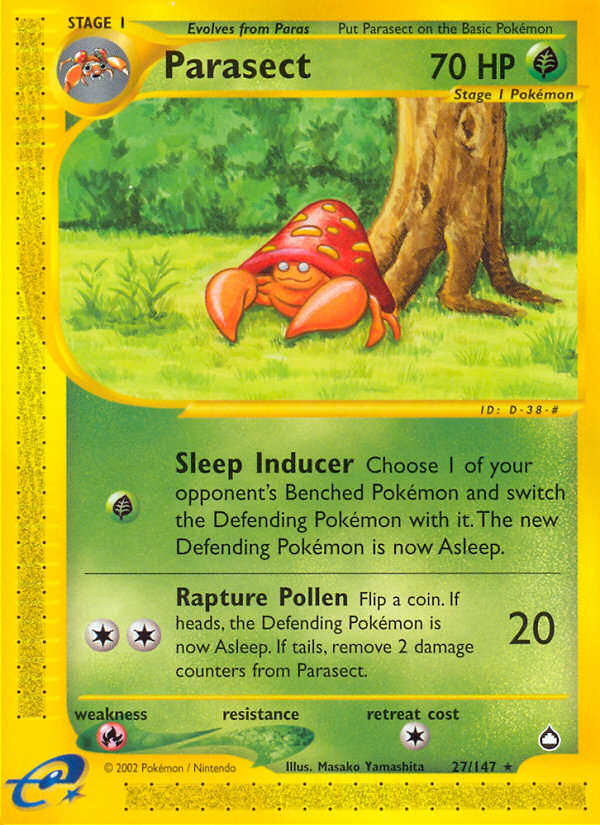
Created by Masako Yamashita for the Unknown Set set.
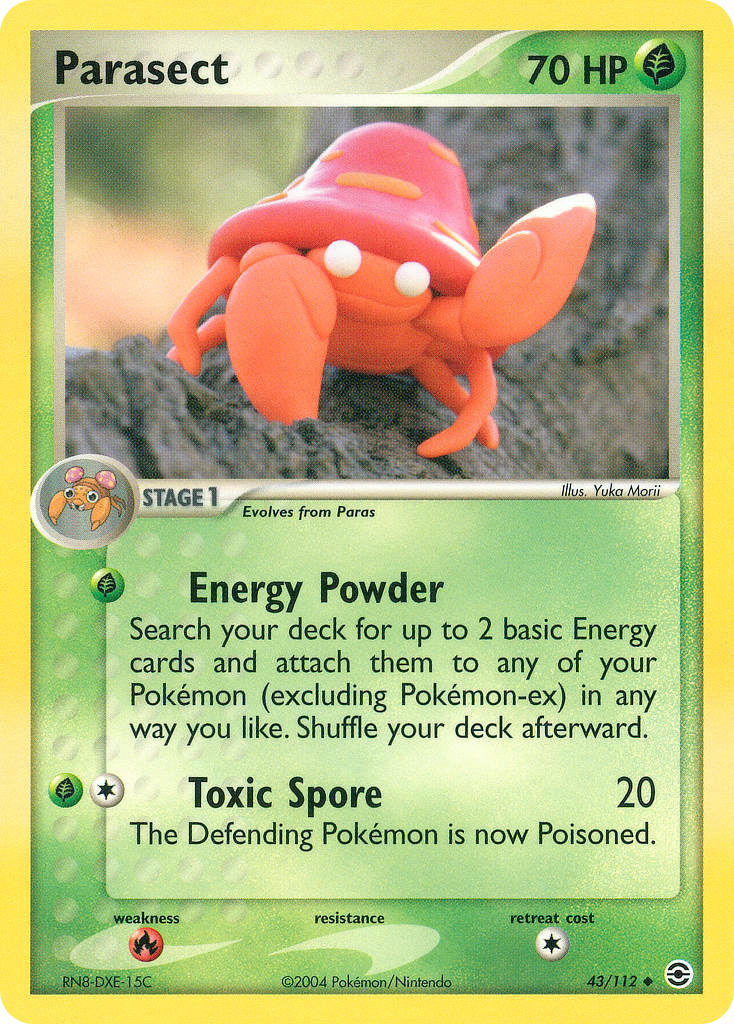
Created by Yuka Morii for the Unknown Set set.
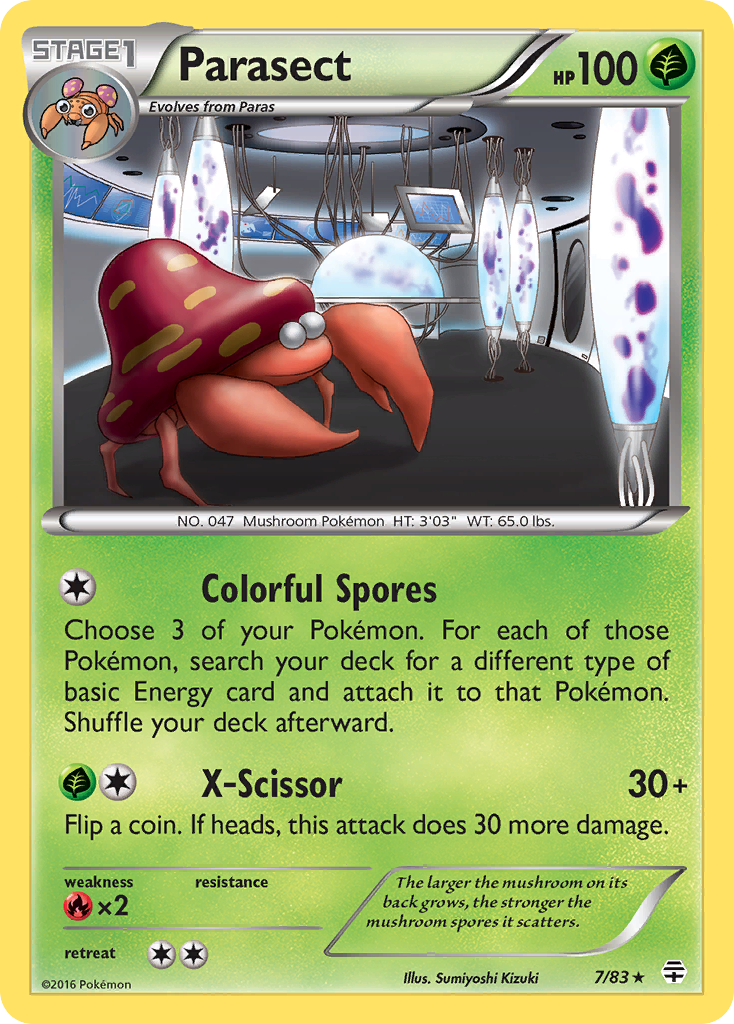
Created by Sumiyoshi Kizuki for the Unknown Set set.
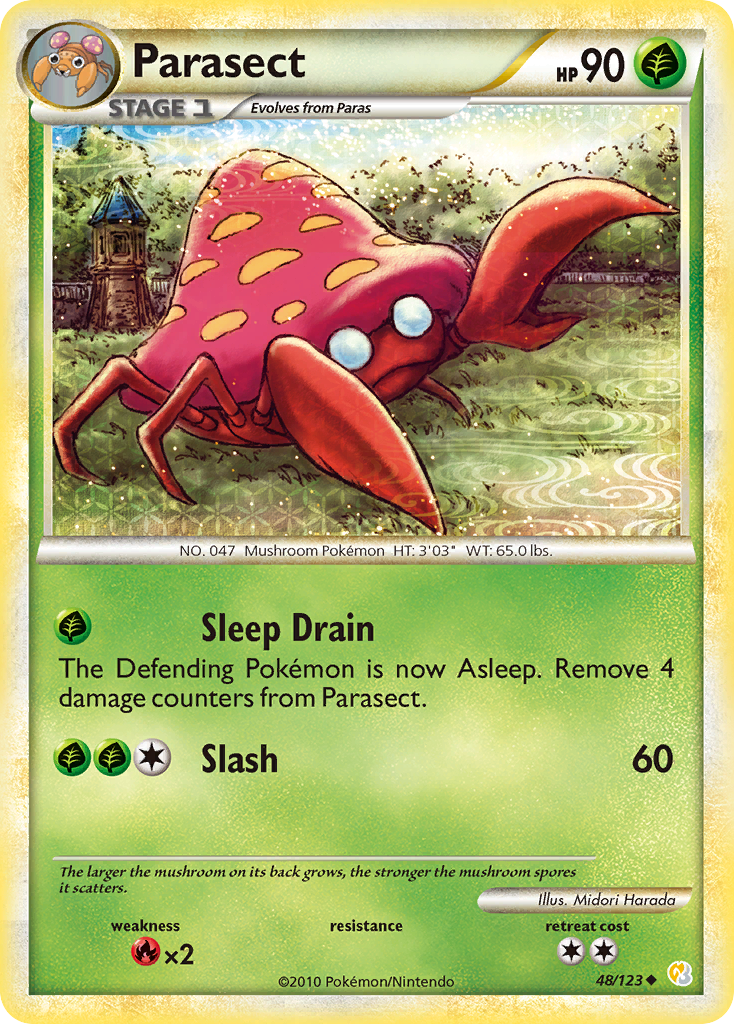
Created by Midori Harada for the Unknown Set set.
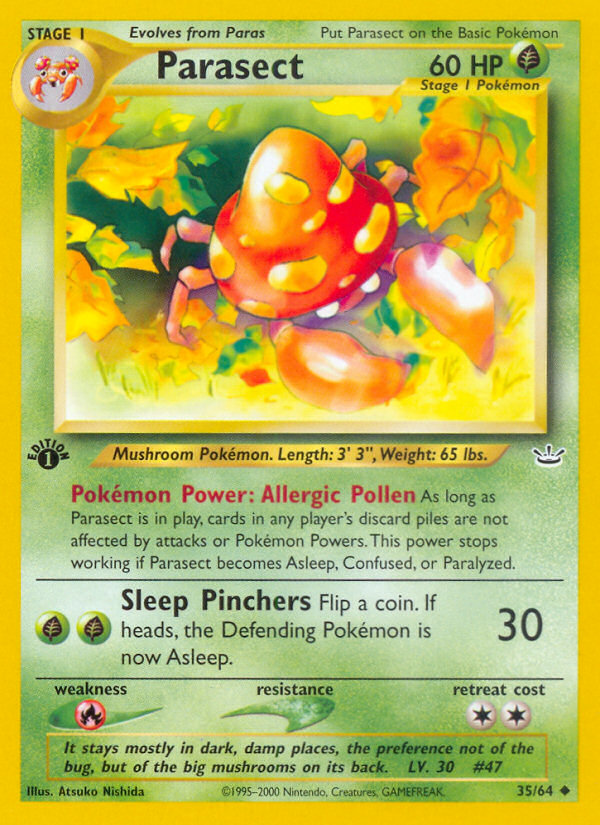
Created by Atsuko Nishida for the Unknown Set set.
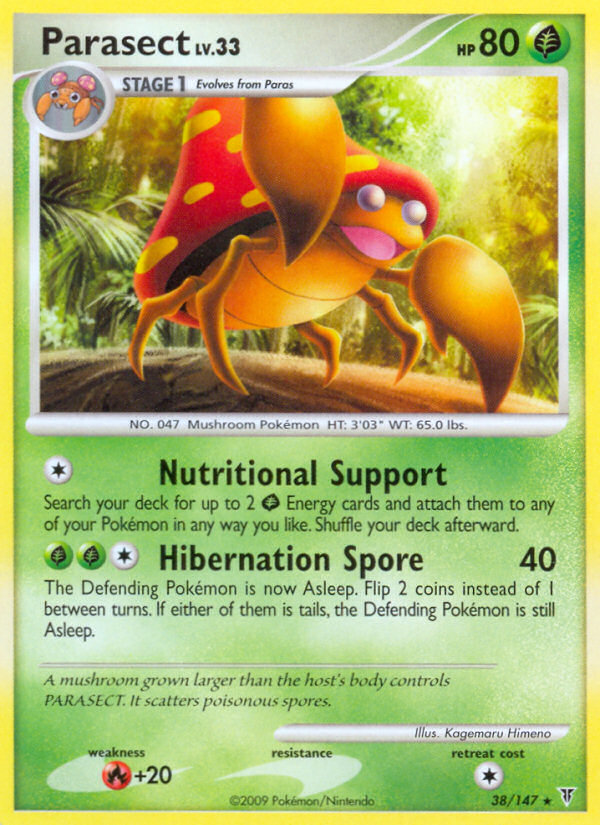
Created by Kagemaru Himeno for the Unknown Set set.
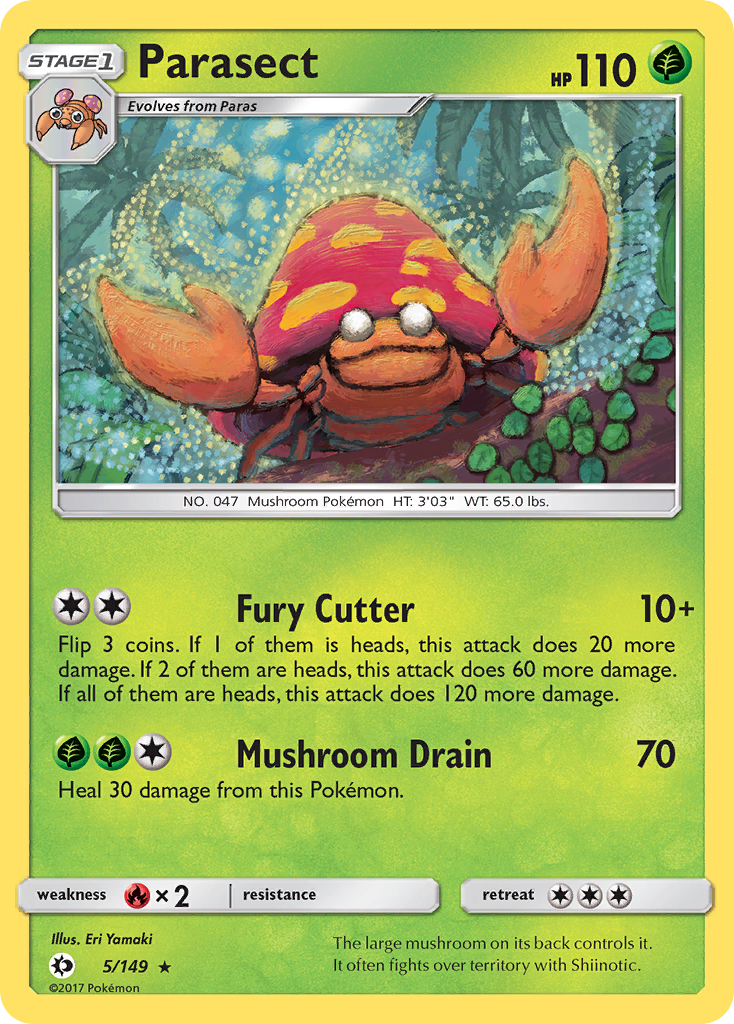
Created by Eri Yamaki for the Unknown Set set.

Created by Satoshi Shirai for the Unknown Set set.
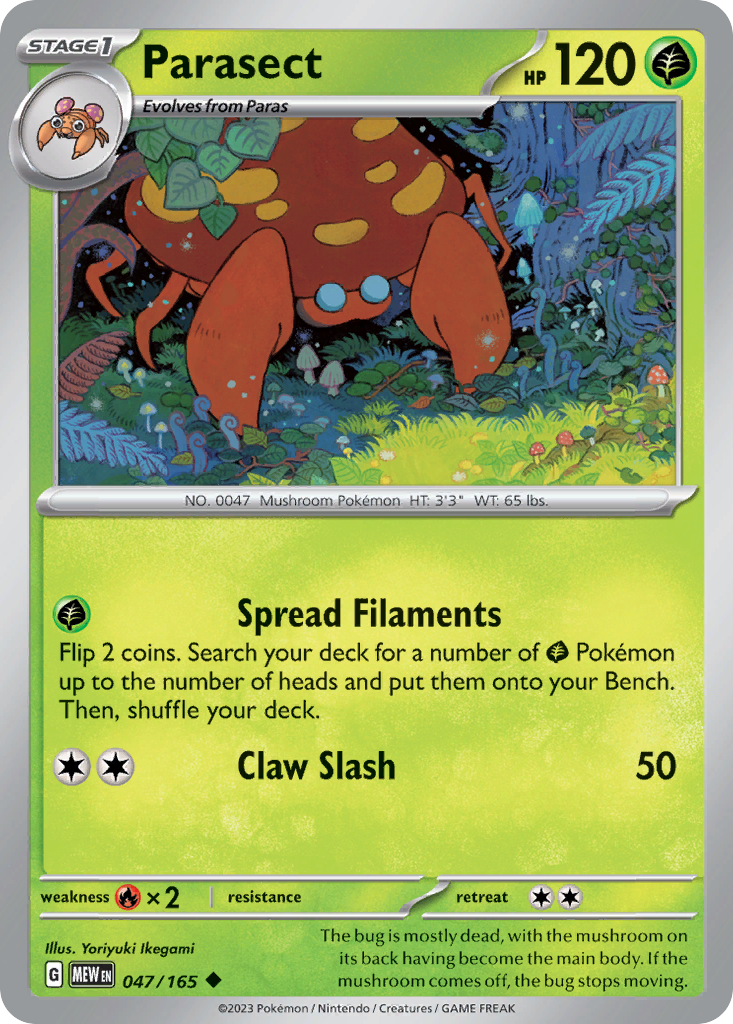
Created by Yoriyuki Ikegami for the Unknown Set set.

Created by Unknown for the Unknown Set set.

Created by Pani Kobayashi for the Unknown Set set.
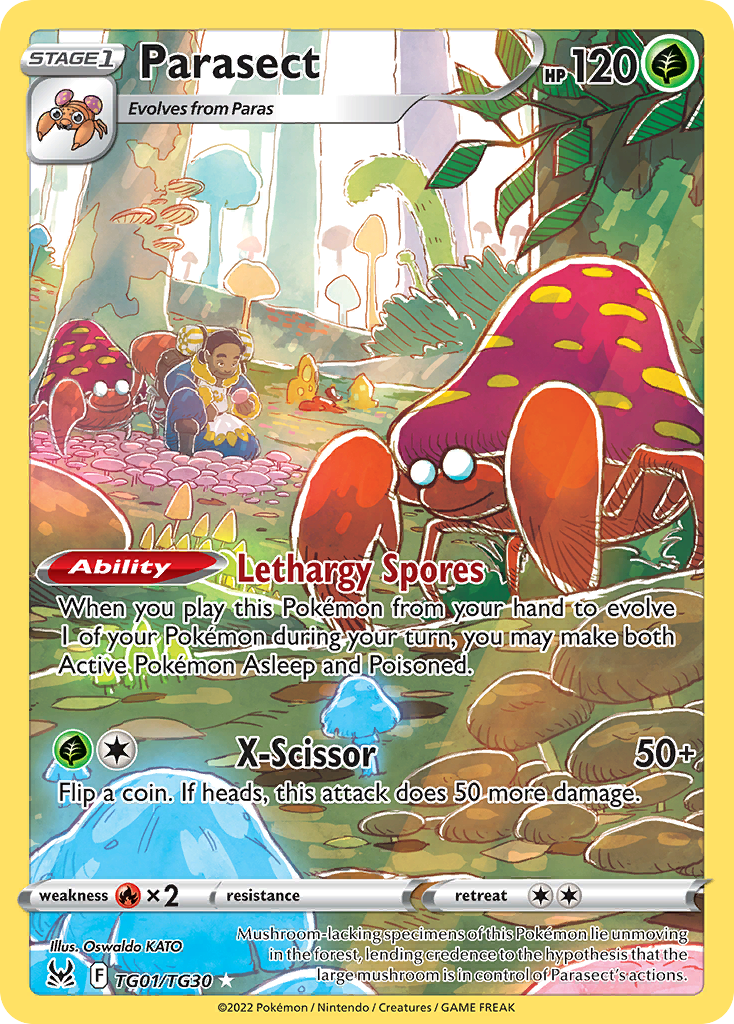
Created by Oswaldo Kato for the Unknown Set set.
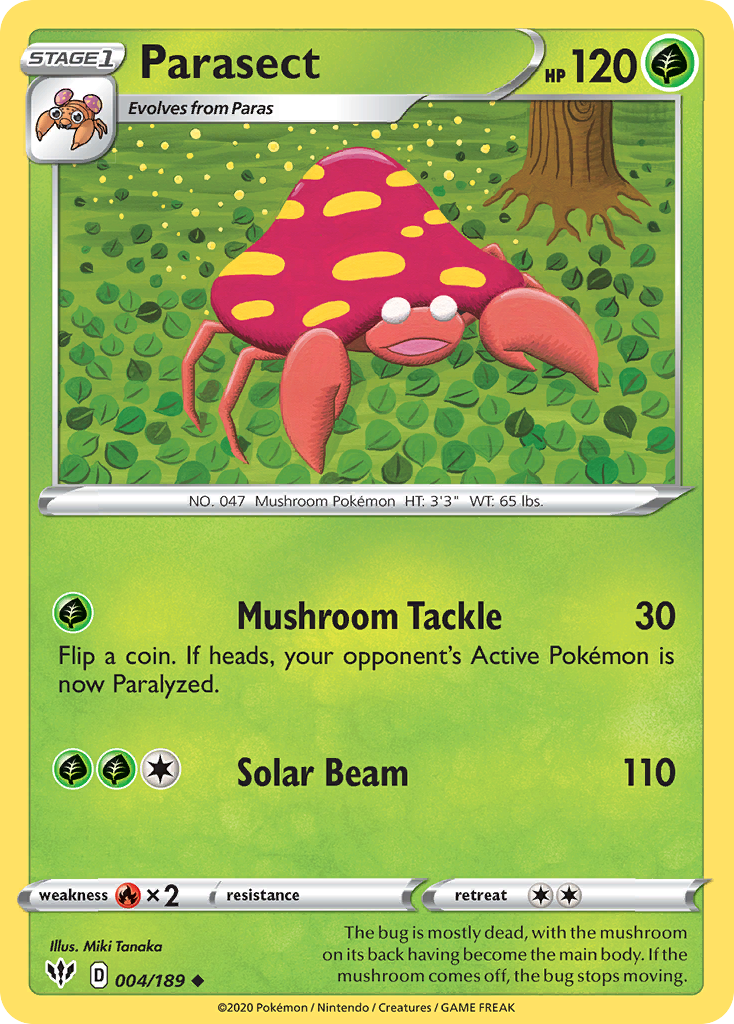
Created by Miki Tanaka for the Unknown Set set.
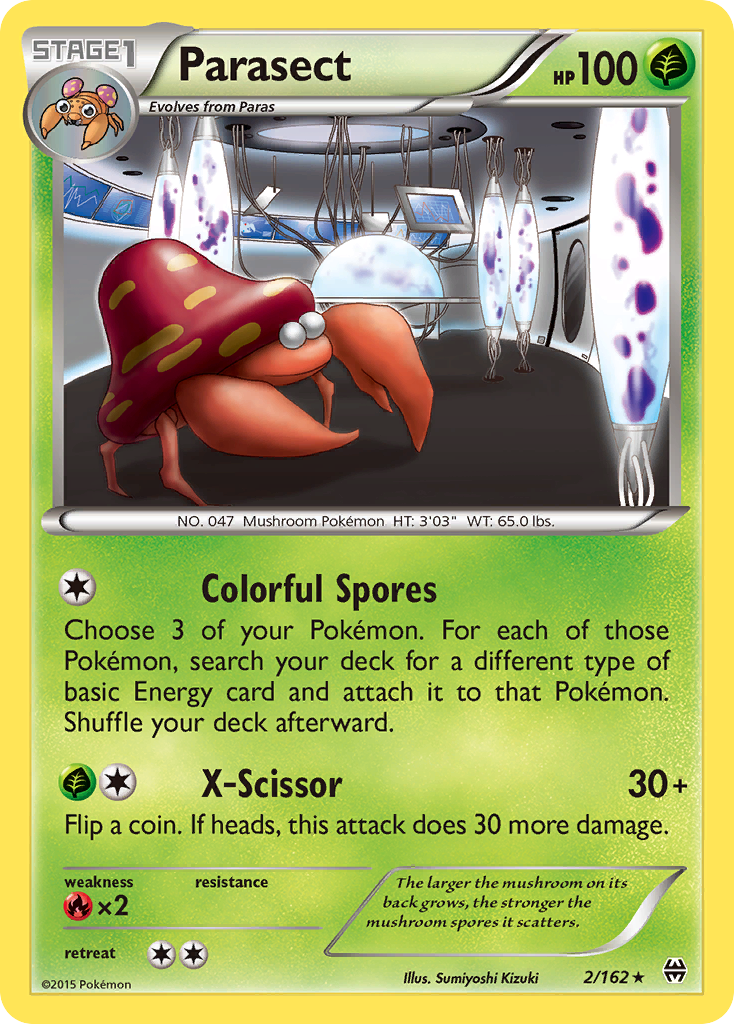
Created by Sumiyoshi Kizuki for the Unknown Set set.